The 10 Coolest Servers Of 2014

Servers In 2014: Who Says Hardware Doesn't Count Anymore?
The server business in 2014 faced a raft of massive changes, including a shift toward software-defined everything and a move to converge server, storage and networking resources into a single box. Yet through it all, businesses continue to purchase more servers, with second-quarter 2014 shipments up 1.2 percent compared to second-quarter 2013, IDC said.
CRN has gathered 10 of the most interesting server introductions for 2014, which illustrate just how dynamic the industry continues to be. Turn the page, and prepare to be amazed.
Also, be sure to check out the rest of CRN's 2014 product coverage.
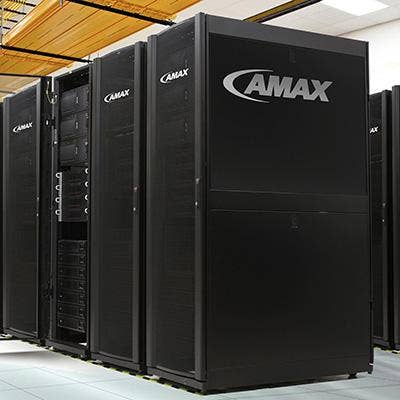
Amax ClusterMax Supports Nvidia Tesla K80
Amax, Fremont, Calif., is offering the latest Nvidia Tesla K80 family of GPU accelerators in its ClusterMax GPU cluster and ServMax GPU server platforms. The company estimates the Tesla K80 dual-GPU accelerator can offer 10 times higher performance than today’s fastest CPUs, making them useful for complex analytics and computation-intense scientific computing applications.
For example, Amax's ClusterMax SuperG GPU cluster can be configured with up to 539,136 GPU cores, over 604 teraflops of single-precision and over 201 teraflops of double-precision performance, and 2,592 GB of GDDR5 GPU memory per 42U cluster.
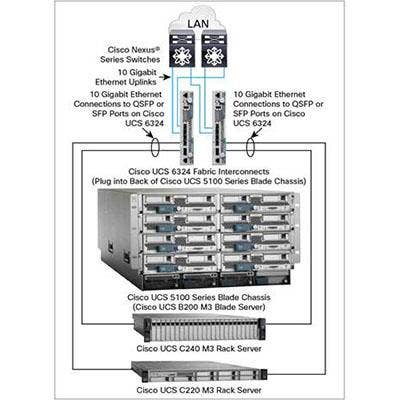
Cisco Brings UCS To The Masses With Mini
Cisco's new Cisco UCS Mini server features the company's B-Series blade chasses and blades, but replaces the highly expandable Fabric Extender, or "FEX" in Cisco-speak, with the new Cisco UCS 6324 Fabric Interconnect. The UCS 6324 plugs into the back of the chassis to provide network connectivity for up to eight Cisco UCS blade servers and seven direct-connect rack servers, giving it a total domain of up to 15 Cisco servers, compared to thousands for the FEX.
Cisco expects its partners to deploy UCS Mini in remote or branch offices, as well as in midmarket organizations with smaller IT footprints.
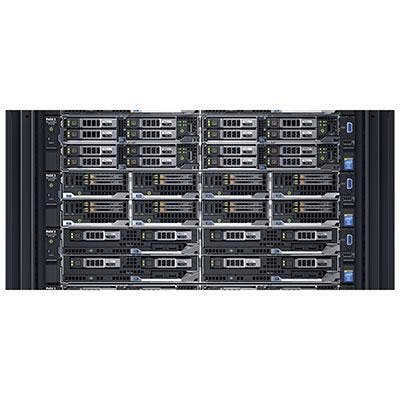
Dell Goes Modular
Dell this month plans to start shipping its new PowerEdge FX modular server solution, a data-center-optimized infrastructure that lets customers configure the system to support a wide variety of enterprise workloads.
The PowerEdge FX features a 2U rack-mount chassis, with the upper 1U having four bays for modular server cartridges. Those servers eventually will be available in several versions from system-on-chip processors to having four server processors per module. The bottom 1U has up to 16 hard drives that can be configured as direct-attach storage for the four server modules as needed. Eight PCIe slots allow any type of connectivity solution to be configured.

HP ARMs For The Enterprise
Hewlett-Packard started shipping two new ARM-based modules for its modular Moonshot servers. The HP ProLiant m400, which HP claims is the first enterprise-class, 64-bit ARM-based server on the market, is based on Applied Micro Circuits' X-Gene Server on a Chip which, when working with the Canonical Ubuntu operating system, can cut the total cost of ownership by 35 percent compared to rack servers, HP said.
The HP ProLiant m800, a 32-bit ARM-based Moonshot module optimized for realtime data processing of high volume, complex data, is based on the KeyStone architecture-based 66AK2Hx SoCs from Texas Instruments, featuring four ARM Cortex-A15 cores and integrated digital signal processors.
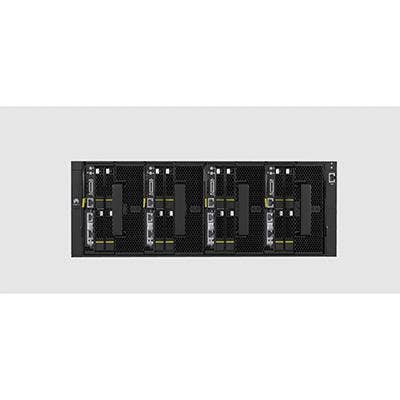
Huawei: HPC For Cloud Data Centers
Shenzhen, China-based Huawei's new FusionServer X6800 is a 4U, multinode server, supporting a variety of server nodes to meet elastic configuration requirements of computing, storage and I/O resources. It features eight rear PCIe slots, four Gbit Ethernet or two 10-Gbit Ethernet ports, and 94 percent power efficiency power supplies. To reduce cooling costs, the FusionServer X6800 offers long-term operation at 40 degrees C (104 degrees F).
The X6800 also supports simplified system management, and efficient operation and maintenance for such applications as cloud computing, big data and high-performance computing, including in cloud data centers.

IBM Advances On Power
While IBM transitions its x86 server business to Lenovo, it is doubling down on Power servers, including a new line for big data and analytic workloads.
The servers, launched as part of the company's OpenPOWER initiative for helping third parties take advantage of the Power servers, include the Power S824L, IBM's first server to leverage NVIDIA’s GPU accelerator technology to boost performance and optimize workloads. It features 8 threads per core, Java code optimization with hardware assist, PCIe 3 connectivity and one or two NVIDIA GPU accelerators for offloading processor-intensive operations.
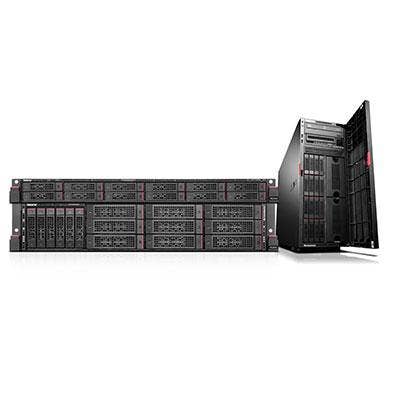
Lenovo Ups Server Ante Before Getting IBM's Stuff
Lenovo advanced its server portfolio despite its acquisition of IBM's x86 server business with a new line of Intel Xeon processor E5-2600 v3 Grantley-based servers. Top of the line is the new Lenovo ThinkServer RD650, a 2U rack-mount server with space for up to 26 drives and 74 TB of storage capacity. It can be configured with up to 768 GB of DDR4 memory, and has up to eight 10-Gb Ethernet ports with an option for four 10-Gbit Ethernet ports and two 16-Gbit Fibre Channel ports. Making them really "cool" is compatibility with the ASHRAE A4 control standard to run continuously at 113 degrees Fahrenheit or 45 degrees Celsius.
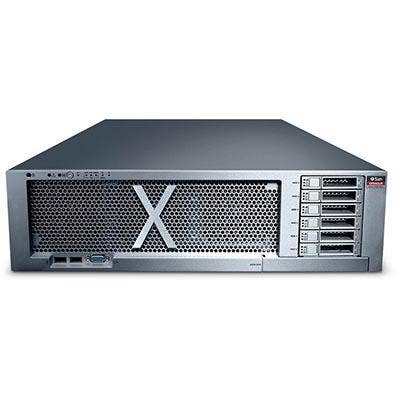
Oracle Exalytics In-Memory Machine
Oracle continues to laugh at those who pooh-poohed its Sun acquisition by introducing powerful appliances based on ex-Sun server technology and Oracle software, including the new Exalytics In-Memory Machine X4-4.
It features four Intel Xeon E7-8895 v2 series processors, and supports up to 3 TB of memory, 4.8 TB of PCI flash and 7.2 TB of hard disks, allowing entire reporting data marts to be cached in memory. It is certified for all Oracle Exalytics configurations and provides several Oracle Essbase in-memory features, including lockless algorithms, Oracle Exalytics-specific thread pool and resource management, and background multiuser writes.
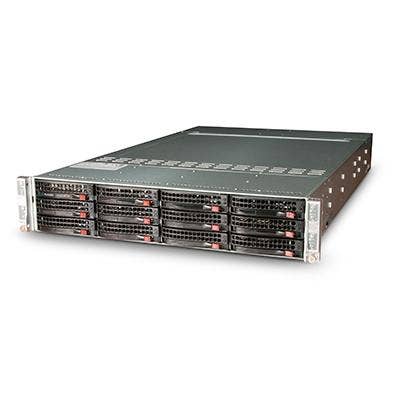
SGI ICE XA Distributed Memory Supercomputer
The SGI ICE XA is a new distributed-memory supercomputer that combines the power of the new Intel Xeon E5-2600 v3 processors with the Linux operating system.
The SGI ICE XA can scale to tens of thousands of nodes and hundreds of thousands of cores running SUSE or Red Hat Linux using InfiniBand connected. The performance of those nodes can be enhanced using Intel Xeon Phi coprocessors or NVIDIA GPU accelerators. They are cooled using SGI's second-generation E-cell warm water cooling technology, which Milpitas, Calif.-based SGI claims provides at least a 30 percent increase in cooling efficiency compared to competing technologies.
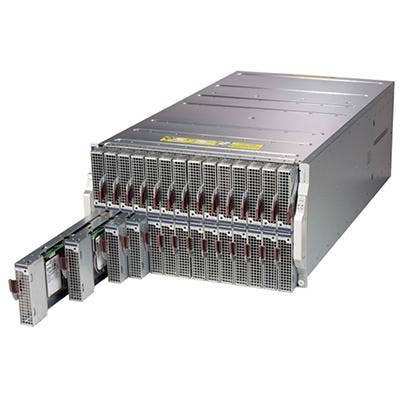
Supermicro Targets Performance, Energy Efficiency
The Supermicro MicroBlade microserver is a high-density, all-in-one total system that features 28 hot-swappable MicroBlade Modules in a 6U chassis. The modules support the new Intel E5-2600 v3 processors, and can be configured for a total of 112 nodes per chassis. Each module can be configured with up to two hard drives or SSDs and one SATA DOM (disk-on-motherboard). The enclosure can have two chassis management modules, one or two switch modules and up to eight redundant 95 percent efficiency power supplies with cooling fans.
The MicroBlade is targeted at cloud computing, dedicated hosting, web front end, content delivery and social networking applications.